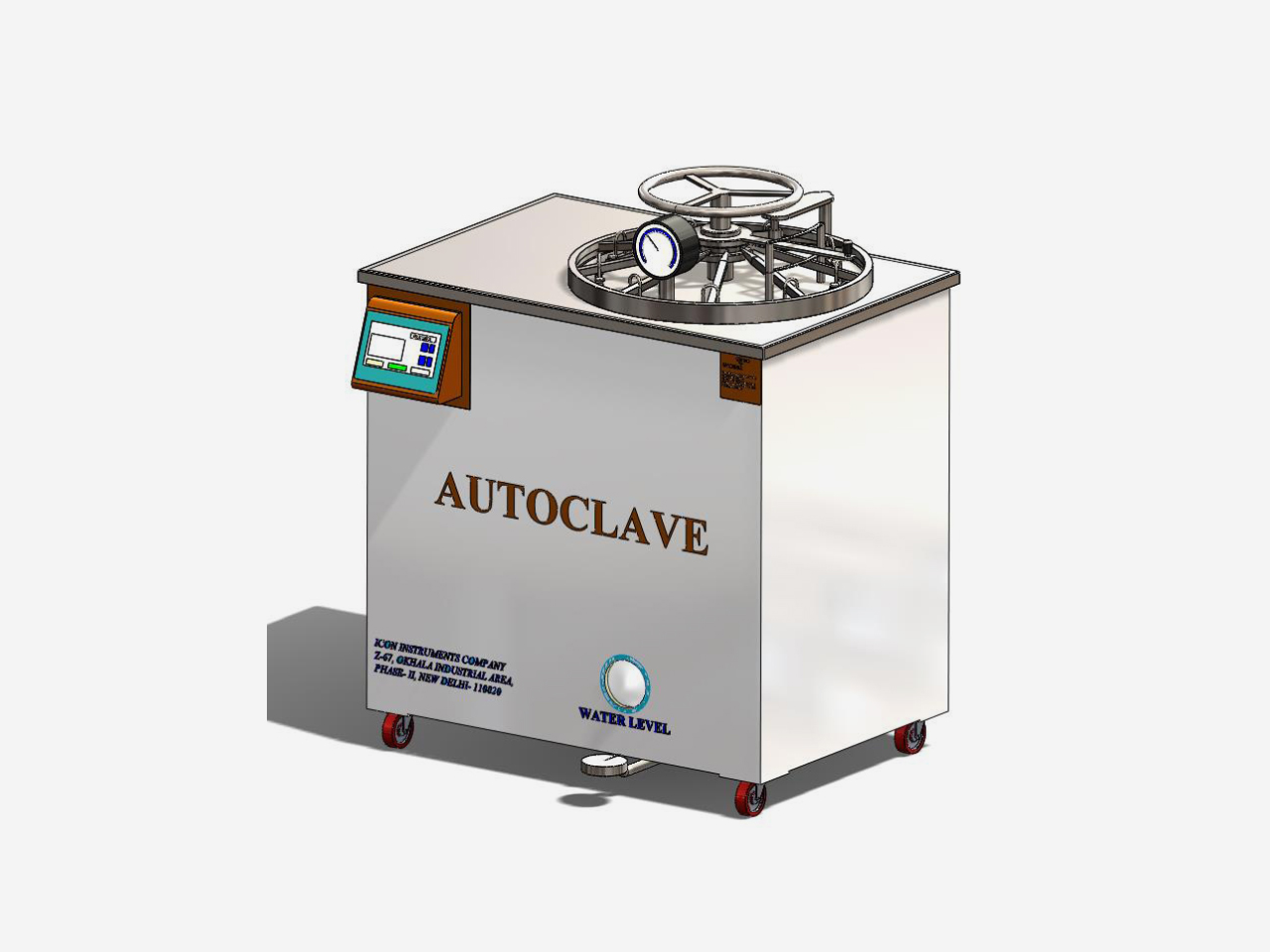Vertical Design:
Thermic autoclave is designed in a vertical orientation, optimizing space efficiency in
Laboratory settings. This design facilitates easy loading and unloading of materials, ensuring convenience and accessibility.
Materials Compatibility:
Thermic autoclaves are suitable for a wide range of materials, including glassware, surgical instruments, media, and laboratory waste. The versatility of these devices
Makes them indispensable in various research, medical, and industrial applications.
Steam Sterilization
The primary sterilization method involves the use of saturated steam at elevated temperatures and pressures. This process effectively eradicates bacteria, spores, and other pathogens, ensuring the sterilization of equipment and materials.
Sealing Lid
Thermic autoclave is equipped with an sealing lid, the autoclave ensures a secure and airtight chamber during the sterilization process. This feature enhances safety and prevents steam leakage, contributing to the overall effectiveness of the sterilization cycle.
Control Panel
Thermic autoclave is equipped with a user-friendly control panel that allows operators to set and monitor various parameters such as temperature, sterilization time. This ensures precise control over the sterilization process.
Safety Features
To guarantee the safety of laboratory personnel, thermic autoclaves are equipped with multiple safety features. These may include pressure release valves, overheat protection, and door interlock systems to prevent accidental openings during operation.
Sterilization of Laboratory Equipment
Vertical autoclaves are extensively used to sterilize glassware, metal instruments, plastic materials, and other laboratory equipment. This process eliminates bacteria, spores, and other microorganisms, ensuring a clean and safe working environment.
Media Sterilization
In microbiology and biotechnology laboratories, vertical autoclaves are employed to sterilize culture media. This ensures that the growth medium is free from contaminants, allowing for accurate and reliable experimental results in cell culture, microbial studies, and other biological research.
Waste Sterilization
Autoclaves are utilized to sterilize laboratory waste, including used petri dishes, pipette tips, and other disposable items. Proper disposal of contaminated materials helps prevent the spread of pathogens and maintains a hygienic laboratory space.
Instrument Sterilization
Surgical and medical instruments used in laboratory procedures can be sterilized in vertical autoclaves. This is particularly important in laboratories conducting experiments or procedures that involve the use of sharp or invasive instruments to minimize the risk of infections.
Cultural Laboratory Practices
Laboratories involved in tissue culture and cell biology often use vertical autoclaves to sterilize culture flasks, plates, and other containers. Maintaining a sterile environment is critical for cell culture work to prevent the introduction of contaminants that may compromise cell lines.
Research Laboratories
Research laboratories across various disciplines, including chemistry, biochemistry, and environmental science, use autoclaves to sterilize equipment and materials for experiments. This is essential for maintaining the integrity of research findings and ensuring that experimental conditions are free from contamination.

